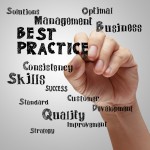Workforce Planning – Today & Beyond
Guest blog post from Janis Strathearn:
A few years ago workforce planning was one of the hottest issues every business was talking about. At the time it was aimed at the C-Suite and did not seem to go any further. Today, workforce planning is back on the table -- some say with a vengeance. The difference this time is that the discussions are more strategic and definitely more inclusive.
Over the last couple of decades, the global business climate has become unpredictable. It is a more complex environment due to changes in technologies, politics, demographics, world populations and other factors. The demand for specialized talent is more fierce than ever before and is quickly becoming the most competitive differentiator. Poaching talent is making headlines!
 The constant business of change
The constant business of change
There will always be periods of growth and periods of recession. What we can be sure of it that each cycle will happen every few years. To complicate things even further, modern day companies are seeking to do more with less.
Having the right people with the right skills now—and in the future—is critical for growing a business, especially in sectors with known shortages of skilled workers. The pressure is on to create a workforce that is more flexible, creative, innovative and agile in delivering results to the business.
Depending on your audience, this practice can have different meanings. The one common denominator is that it’s a tricky business! In the traditional sense it has been viewed as a systematic process used to analyze the gap between the talent a business currently has and what it will take to deliver on the future plans of the business.
 Why workforce planning?
Why workforce planning?
Workforce planning allows an organization to more accurately conduct “what-if” scenario planning and analysis. It translates business strategy into workforce implications. It provides confidence to business leaders to act quickly and appropriately – when the time is right.
Does workforce planning include operational planning? Succession planning? Does it include anything and everything from understanding next week’s schedule requirements to a five-year outlook? Planning should be continuous, iterative and long-term.
Being prepared is certainly more agreeable than being surprised!
 Plans will always be interdependent and should never be done in isolation. The Executive Team must consider (and map) short and long term business plans to develop resource needs. Inviting HR to sit in on the conversation will better support and benefit the business by providing:
Plans will always be interdependent and should never be done in isolation. The Executive Team must consider (and map) short and long term business plans to develop resource needs. Inviting HR to sit in on the conversation will better support and benefit the business by providing:
- HR with the ability to prepare and plan for changes rather than simply react to them
- HR to better manage the implications of business or industry change on the workforce as a whole
- Focus on the areas of the workforce that have the greatest strategic impact to the business – mission critical functions and pivotal roles
- Identification of hard-to-fill positions so that plans can be developed to address these roles
- Notification of skill sets that take a long time to develop so training and development can be considered
- An understanding of which roles will need to be recruited
- Establishing which roles will only need to be “borrowed or rented”
- Determine which partner(s) to align with to successfully execute on the plan
With HR at the table, the strategy becomes invested and executable. Coordinating internal management and external partners ensures the workforce will be the right size, have the right skills and be in the right place to maximize the potential of the business.
How critical is workforce planning?
 No one has the perfect crystal ball. Predicting changing economic conditions, shifting customer demands, emerging markets, next generation technologies, new regulations, leadership expectations or future mergers and acquisitions may not be possible but having a contingency plan in place is definitely possible.
No one has the perfect crystal ball. Predicting changing economic conditions, shifting customer demands, emerging markets, next generation technologies, new regulations, leadership expectations or future mergers and acquisitions may not be possible but having a contingency plan in place is definitely possible.
Workforce planning establishes "Best Practices" and a course of action when there may be:
- Loss of senior, experienced and highly effective personnel
- A staffing gap if someone is off on an extended leave
- The need to respond to and set accurate and realistic salary ranges
- Conditions that require plans to offset excessive trauma or difficulties in the business
- A requirement to have a relationship with a trusted partner to work with on critical hires
On another note – if the business is planning or anticipating major hiring, will the company need to consider relocation to accommodate this change? How much notice do you need to identify and plan a corporate move or expansion?
Having plans in place to anticipate, maintain and support workforce needs and changes protects the overall health of the workforce, the business and prepares for game-changing developments that will become the new competitive advantage.
How does the Executive Team benefit from workforce planning?
 Understandably most companies, regardless of size, would prefer to sidestep panic situations – particularly when it involves hiring or firing people. Workforce planning provides peace of mind and positions the Executive Team to more accurately answer these ten key questions.
Understandably most companies, regardless of size, would prefer to sidestep panic situations – particularly when it involves hiring or firing people. Workforce planning provides peace of mind and positions the Executive Team to more accurately answer these ten key questions.
- What kind of workforce will be required to meet the goals of the business over the next 3, 5 and more years?
- How will workforce planning affect the budgeting process over the next 3, 5 and more years?
- Will the best and the brightest have the right skills and capabilities to set the bar in the future?
- Where will the next generation of leaders come from?
- What is the strategy to deal with the unforeseen loss of an executive or notice from a high value employee?
- Can retiring executives be effectively "managed out" with less disruption to the business?
- Can the business quickly respond to landing a significant new client?
- What will it take to provide smoother business cycles for ramp up and ramp down?
- What are the risks to business continuity if plans are not put in place?
- Does the company have solid and dependable search firm partnerships to rely on?
Summary – Workforce Planning
Workforce planning is a hot topic and it is not going away. It can be very transformative and is now recognized by boards of directors, investors and funders who are now demanding documented plans. To the market, succession planning is considered one of the most critical components. Workforce planning is both a best practice and a sound investment for any organization intent on sustainability.
Here are just a few online stats that make the case:
- Brandon Hall Group 2014 Workforce Management Study reported that 32% of organizations are focused on scheduled planning based on operational needs. Close behind is organizations focused on headcount, at 26%, and skill gap analysis, at 23%. The most surprising result was that 19% of organizations surveyed had NO formal workforce plan in place.
- Gartner conducted a CEO and Executive Survey asking what CEOs considered to be the number one constraint to the growth of their companies. The resounding response was talent. Understanding and closing the gap between current and projected talent needs can make all the difference in a company’s ability to execute strategy effectively.
- The Conference Board of Canada observes retirement eligibility at senior management levels will be a major concern for employers, given the high percentage of employees in these groups eligible to retire. Nearly one-third of public sector senior executives and 21% of private sector executives are eligible to retire in the next 12 months.
- Gallup reports that nearly 70% of the workforce may not be achieving their full potential.
- PWC reports that voluntary turnover among high performers is on the rise.
- Harvard Business Review shows that 79% of executives believe lack of frontline leadership capability negatively impacts company performance.
- Corporate Executive Boards assert that 64% of employees don’t understand their organization’s goals.
- PWC reports that a full 93% of CEOs want to change their talent management strategies, but only 33% have acted on their plans.
